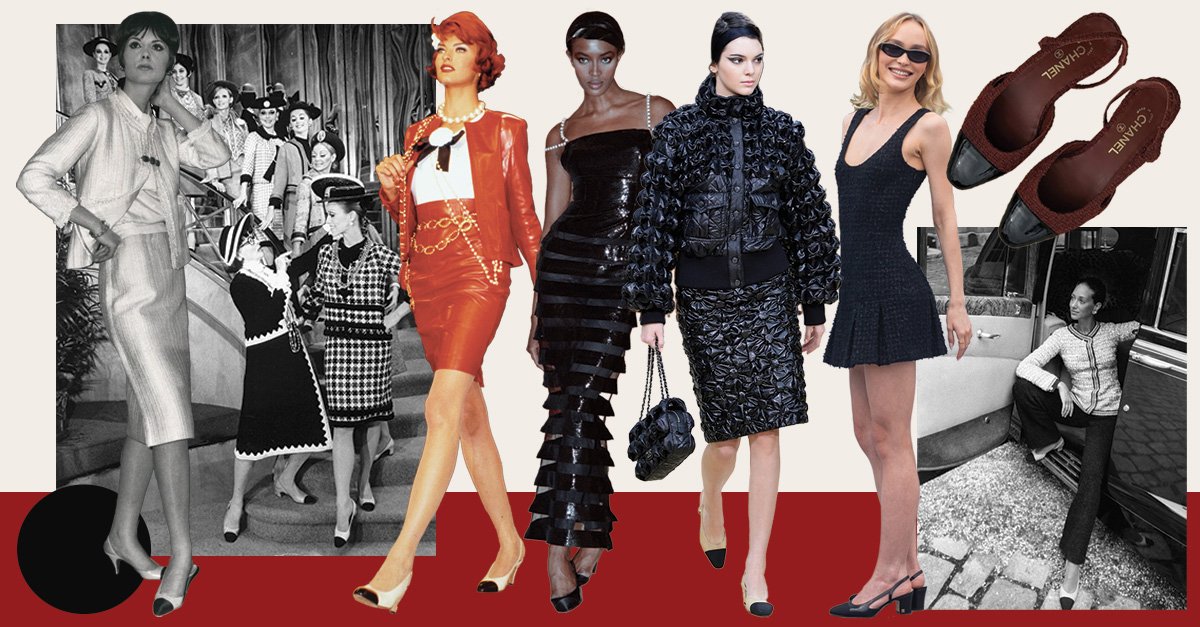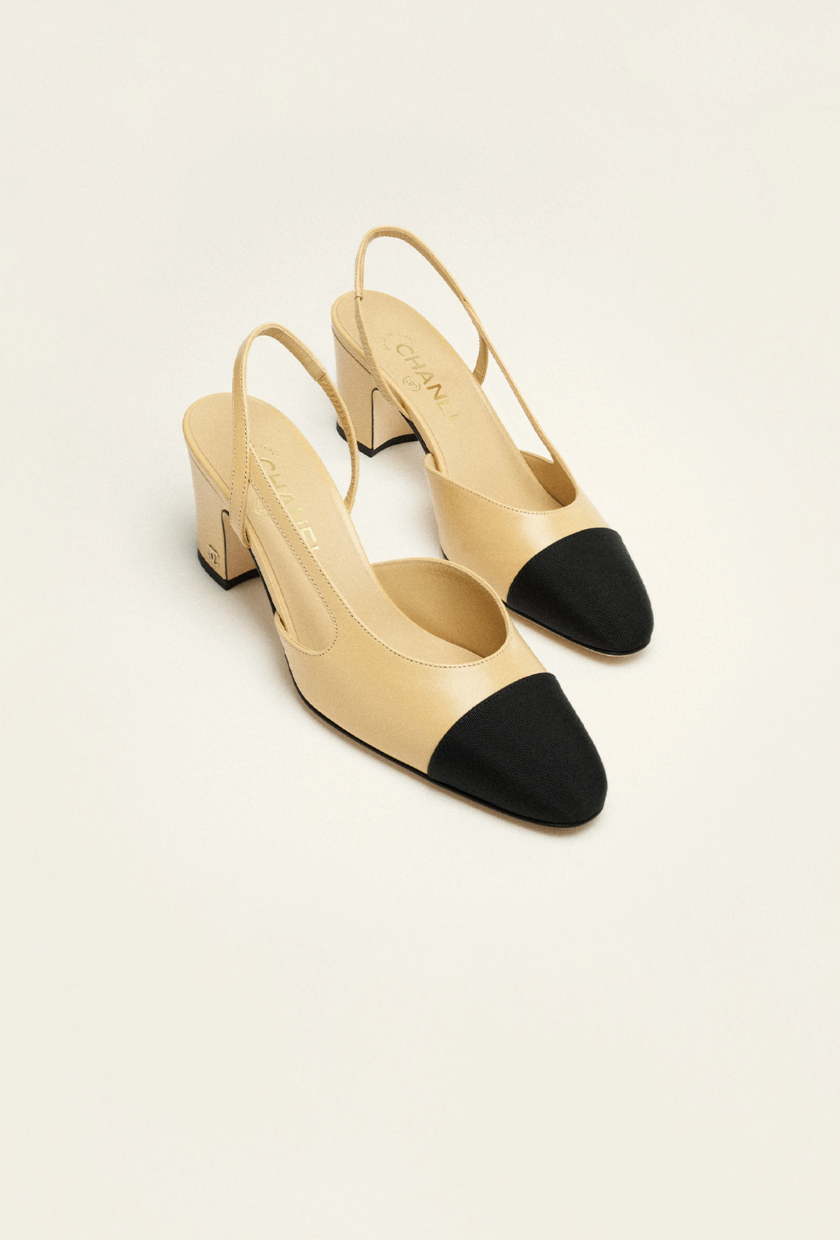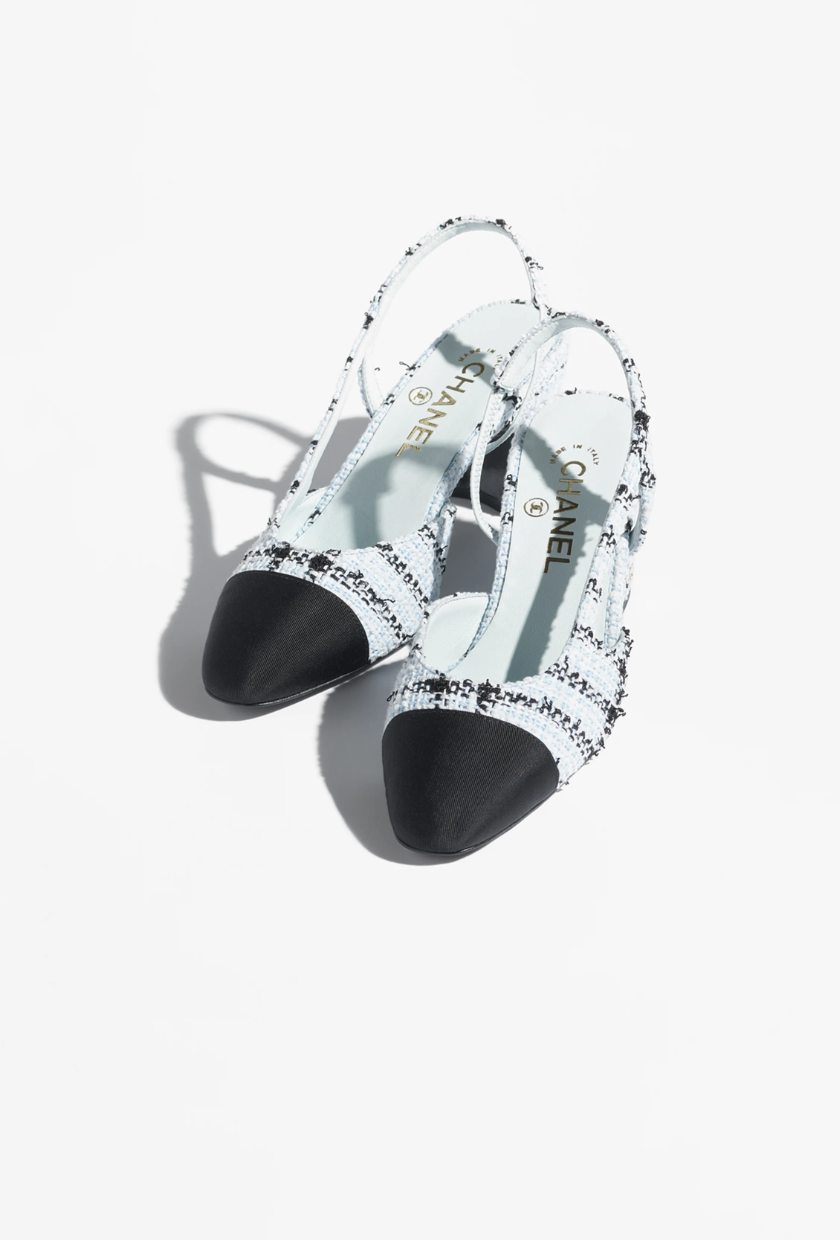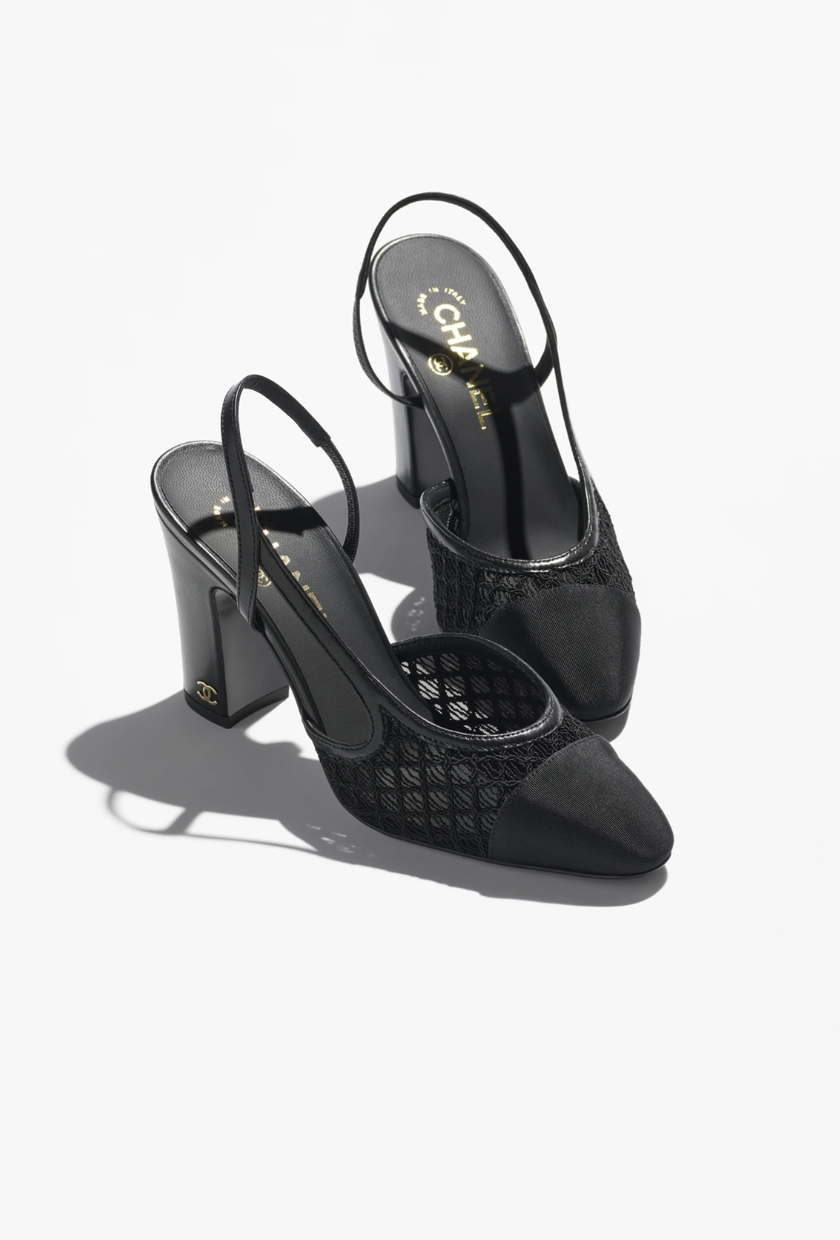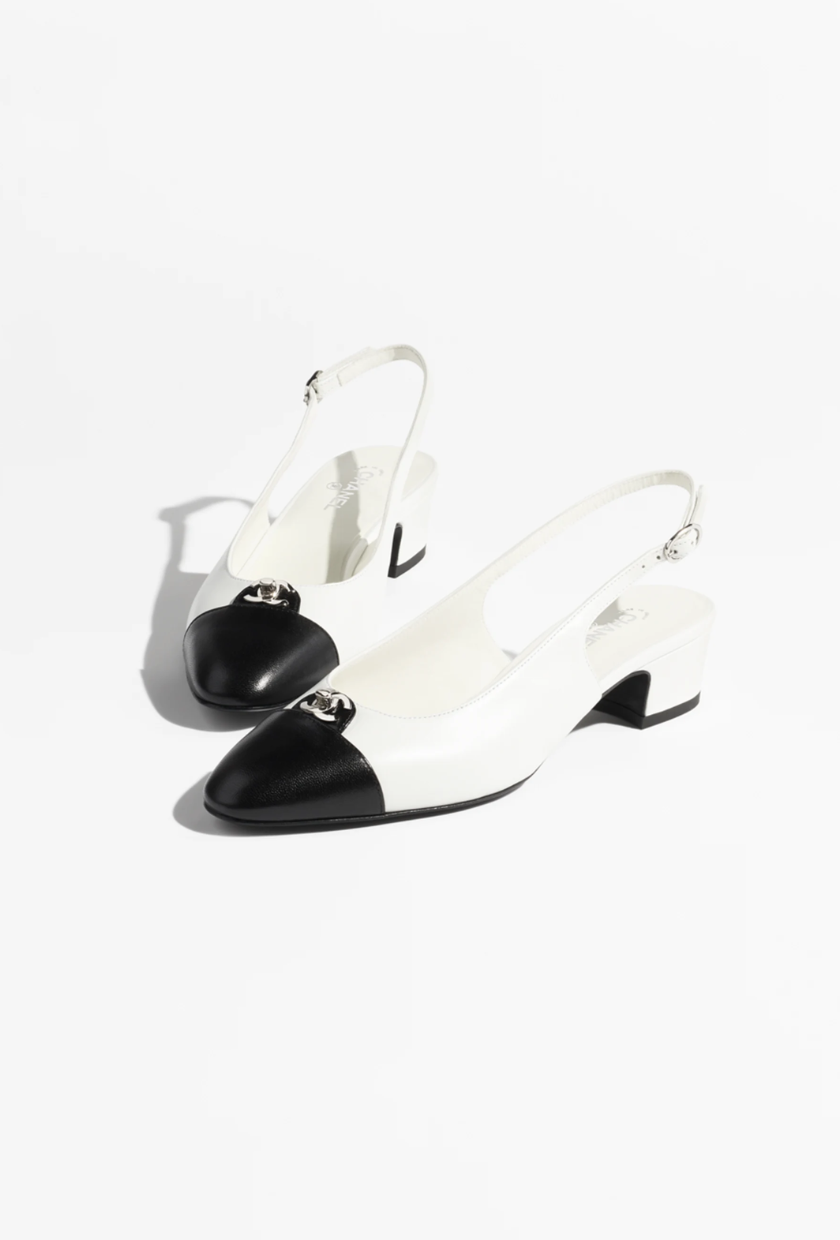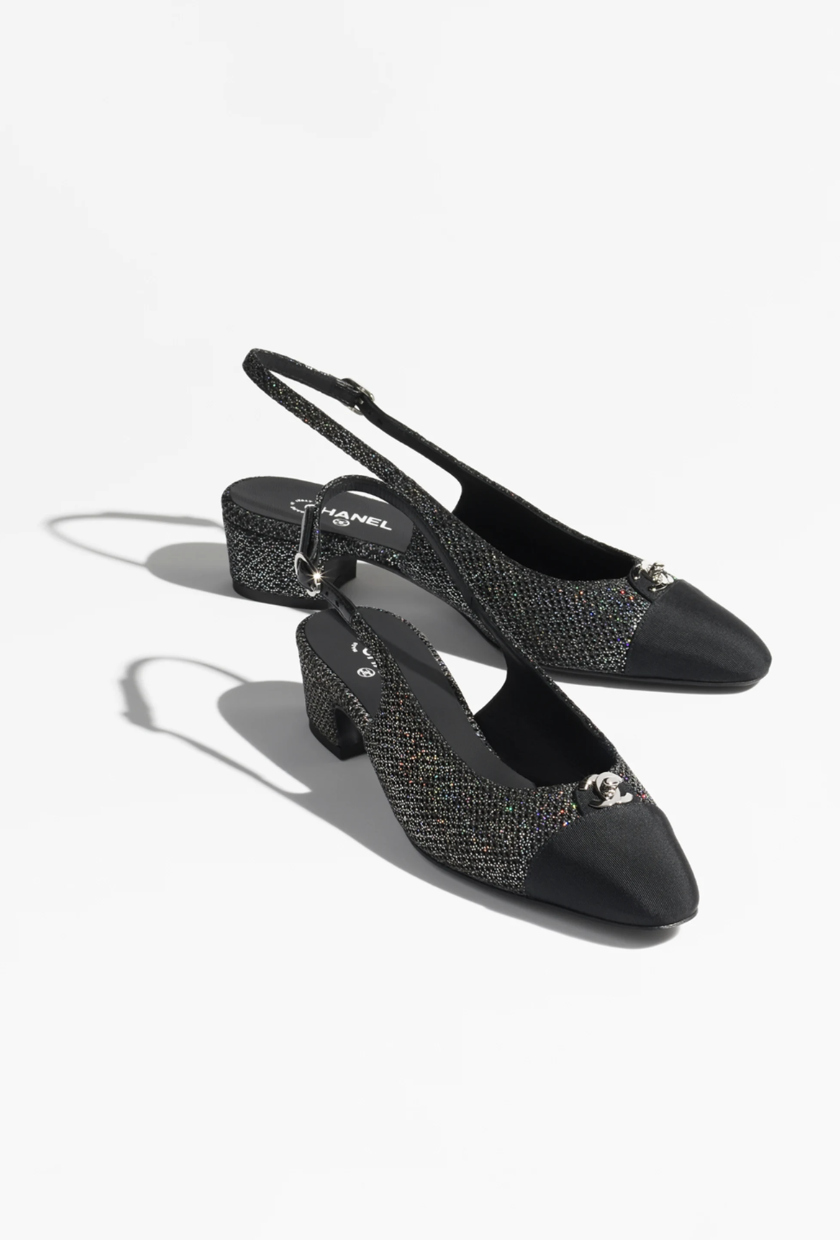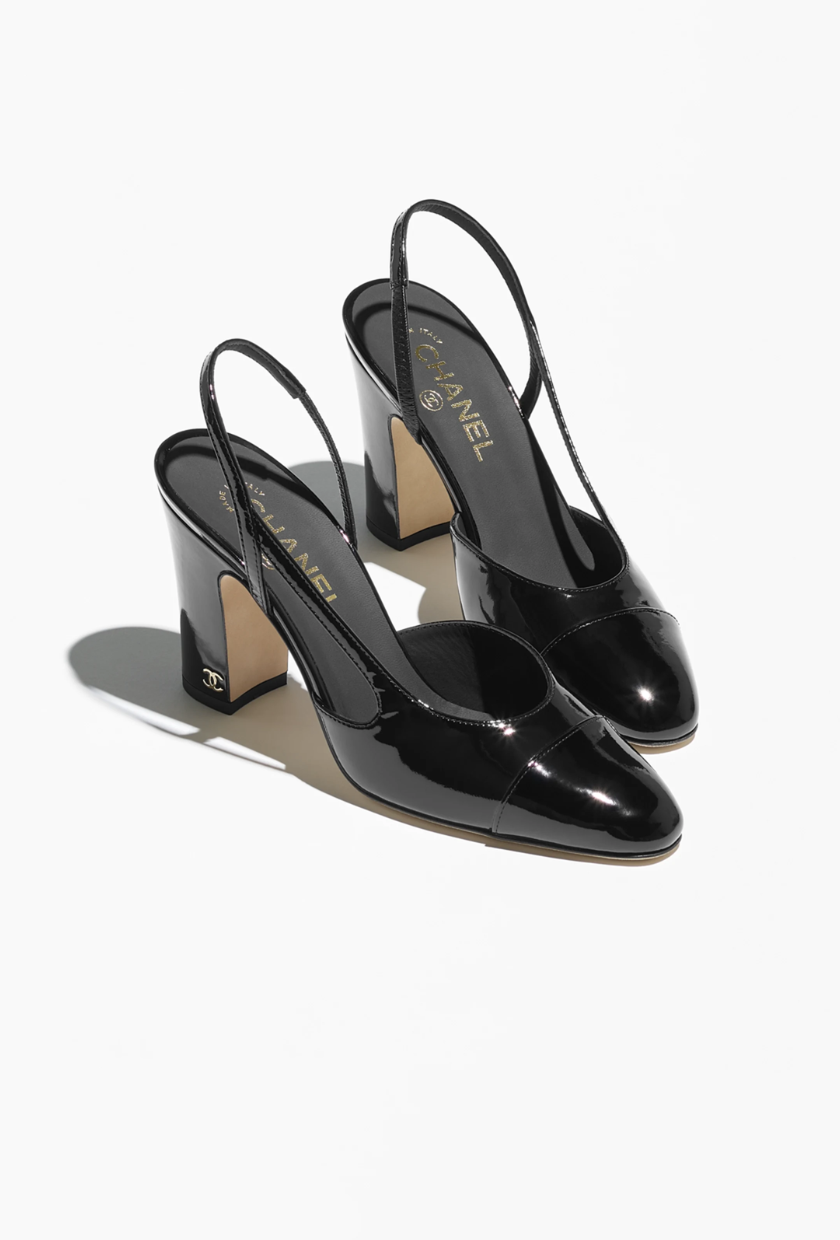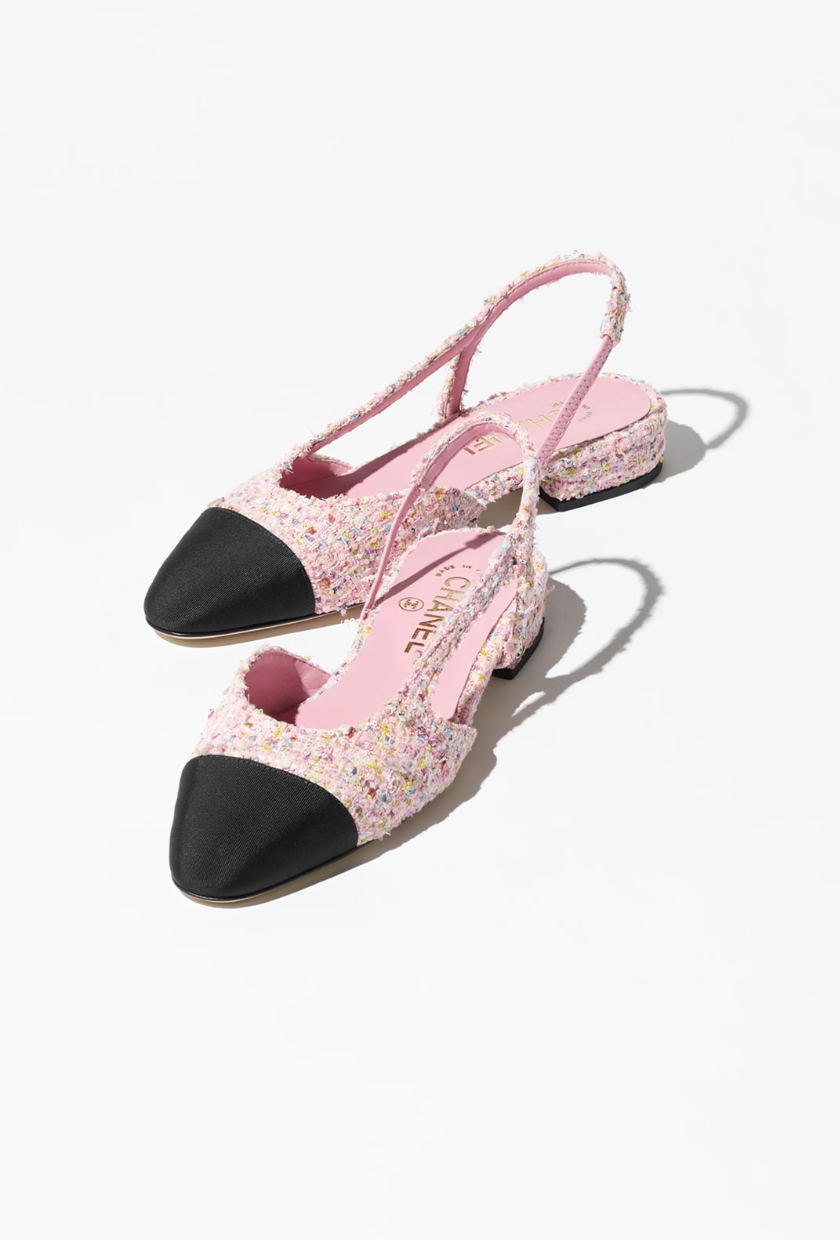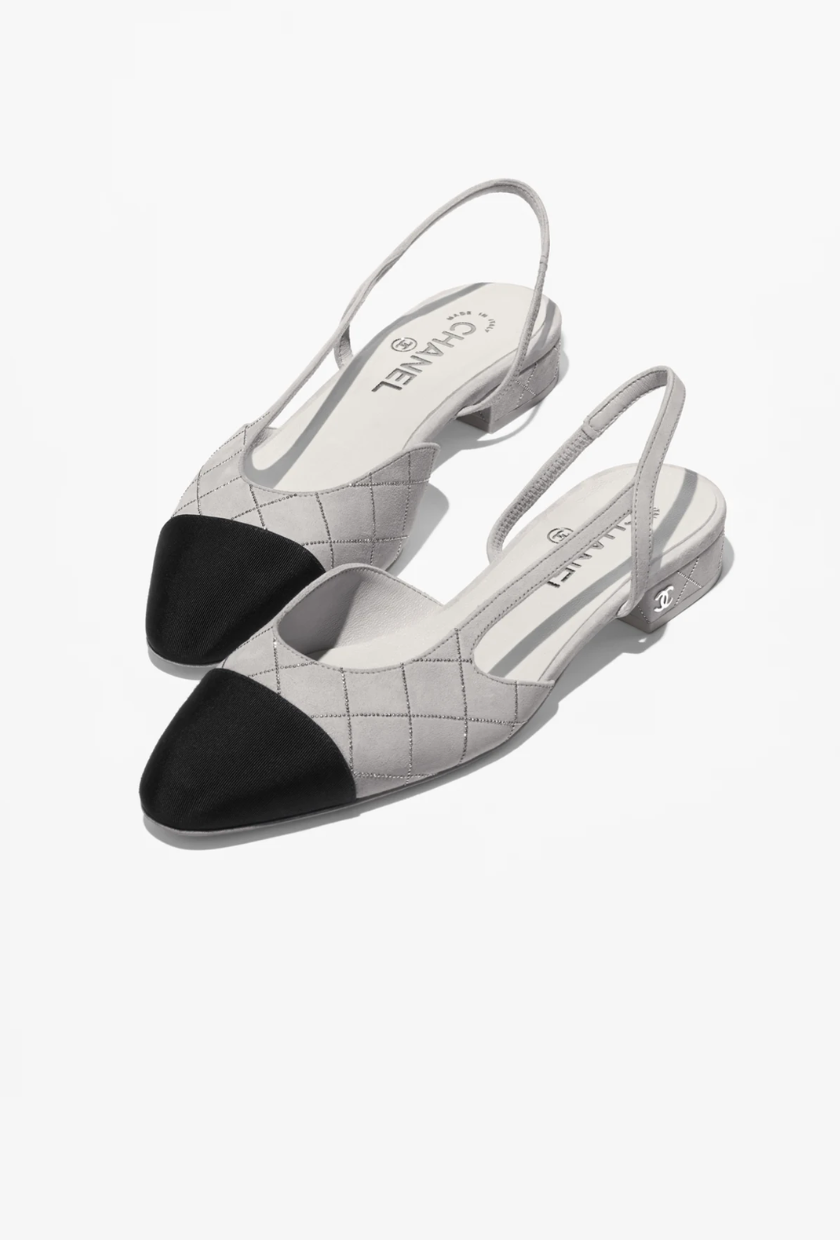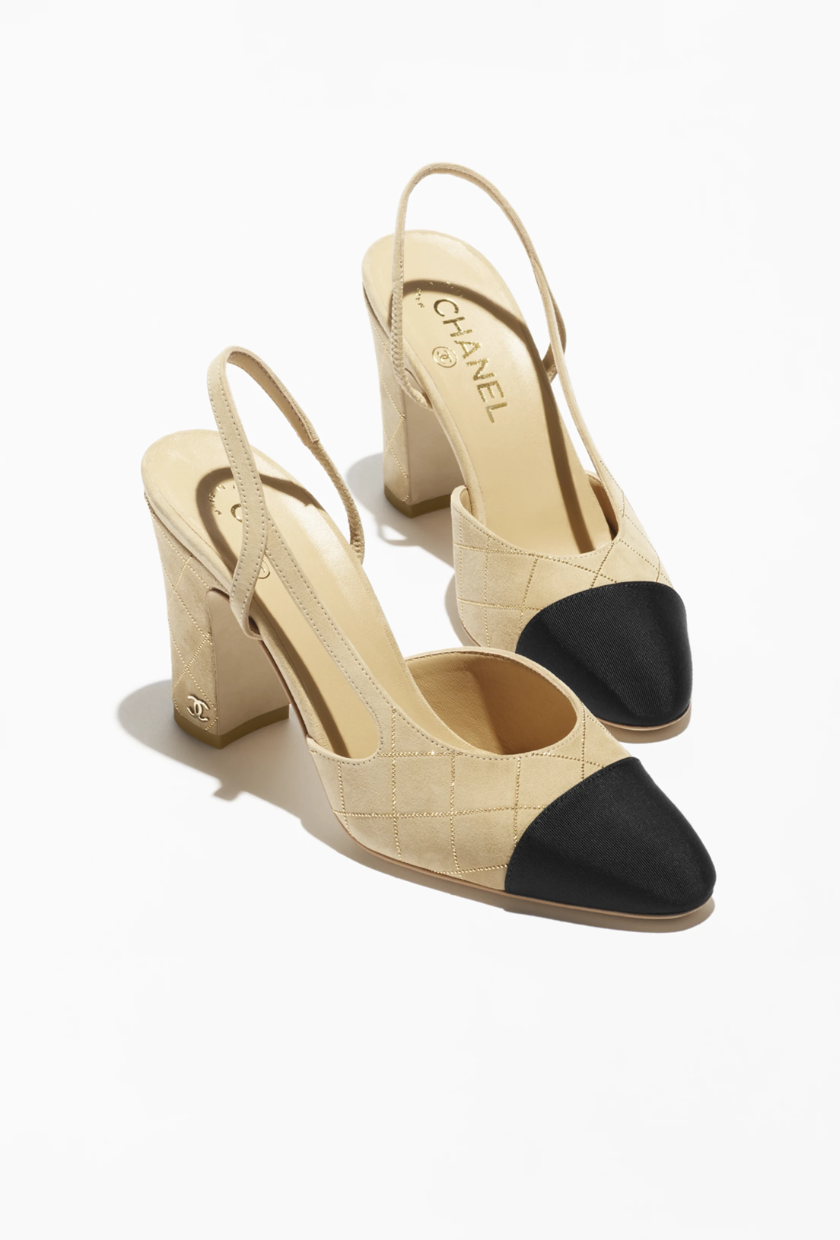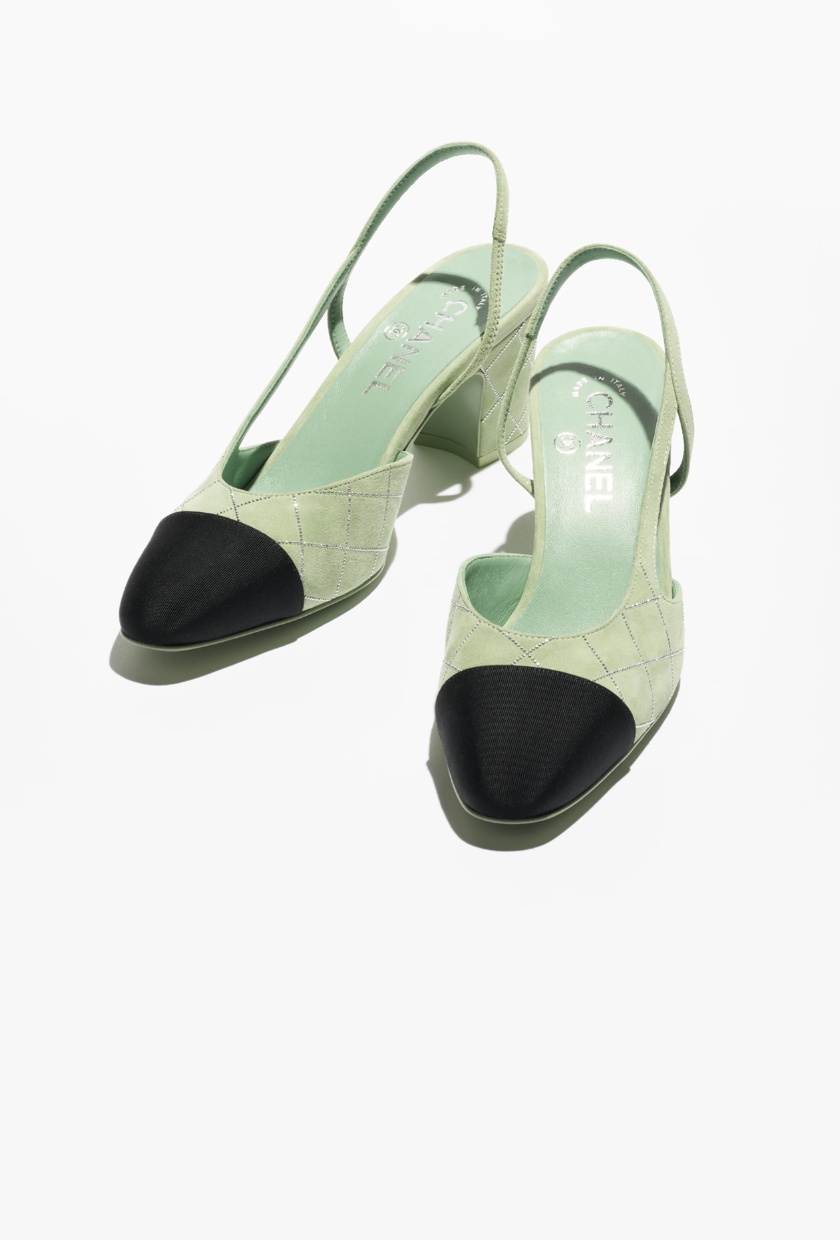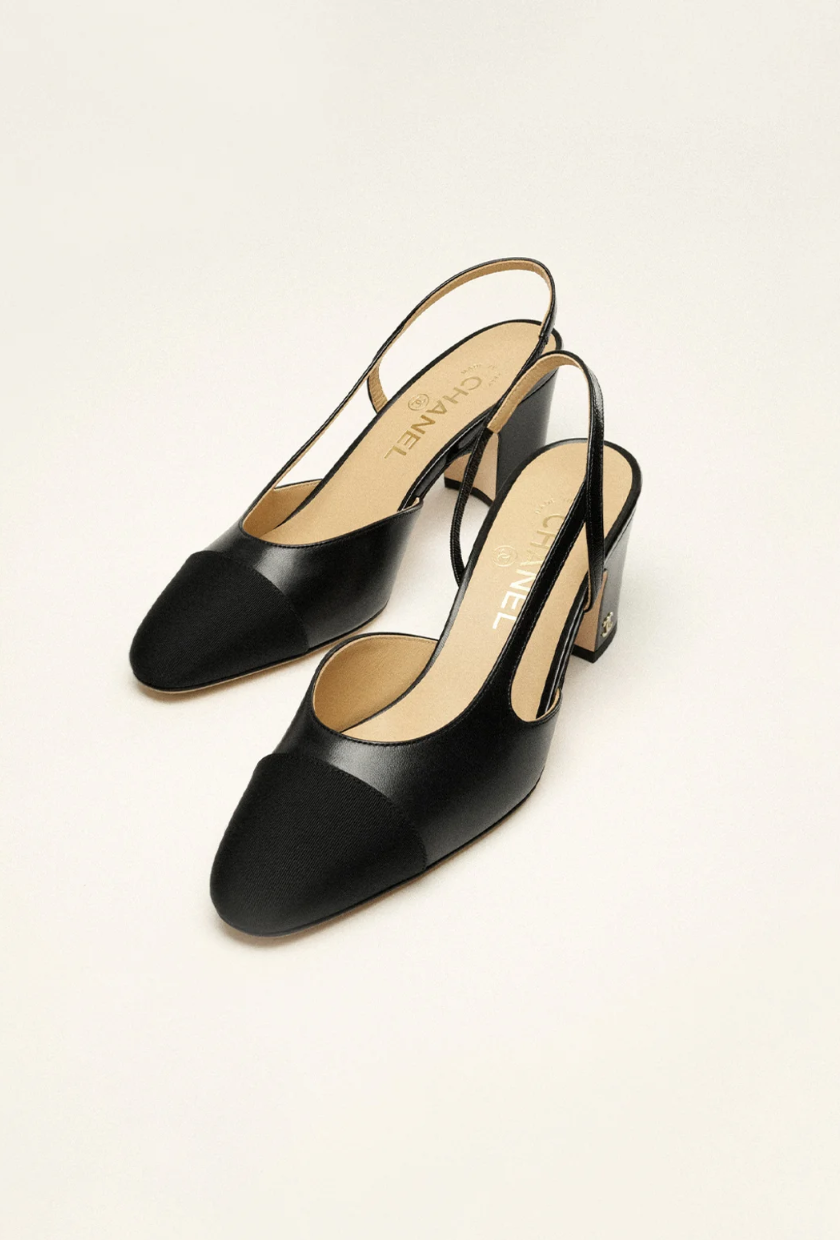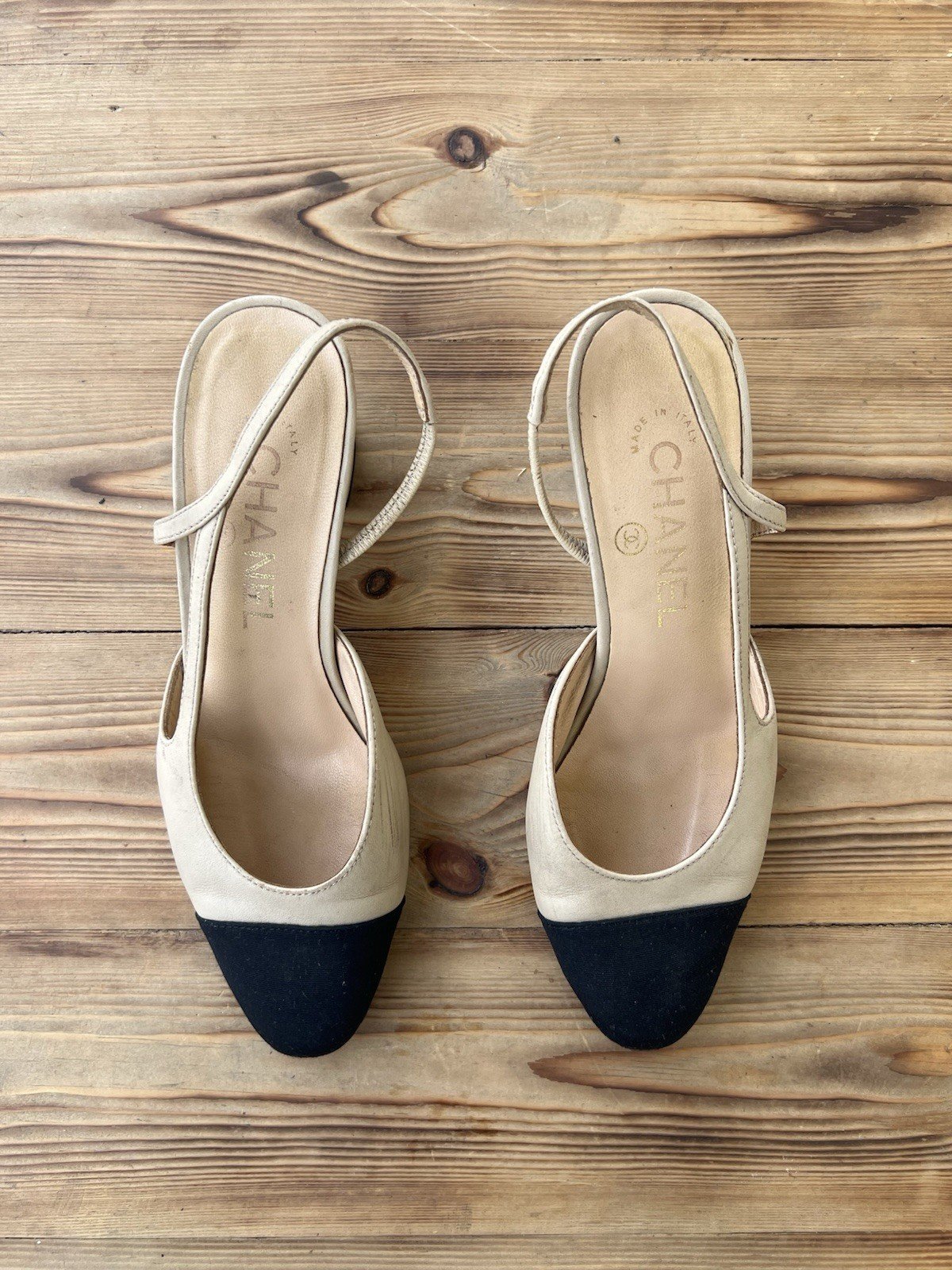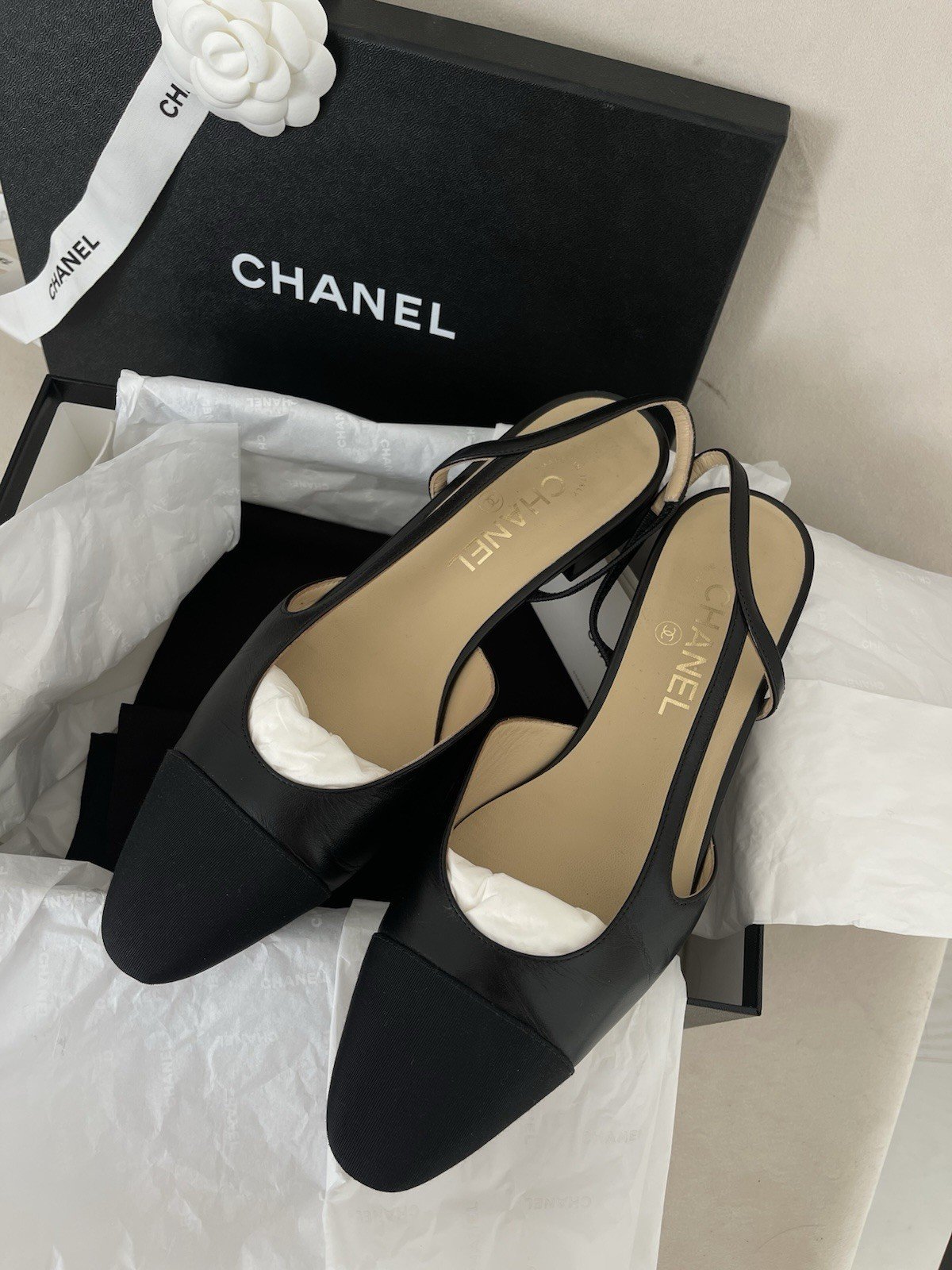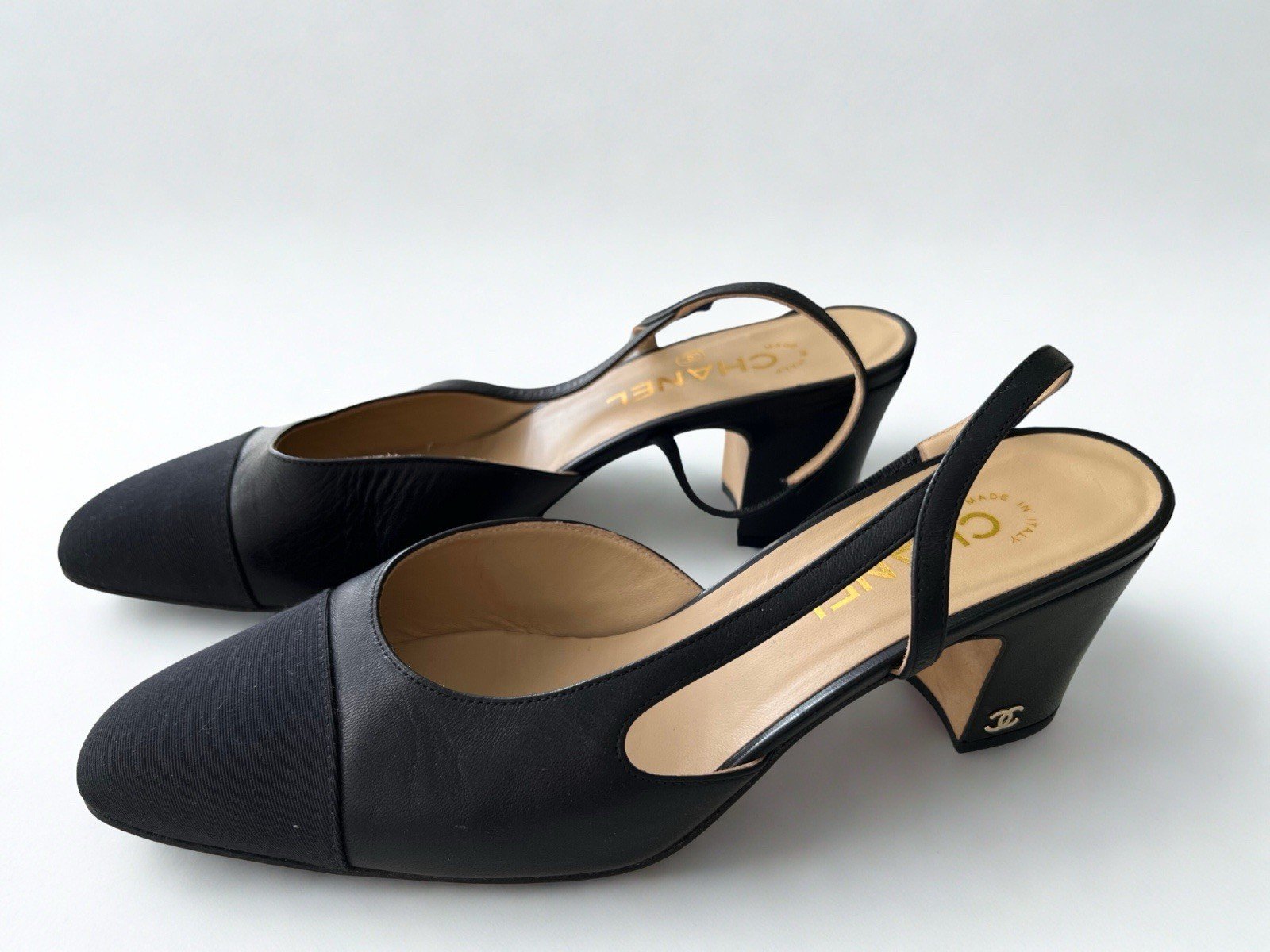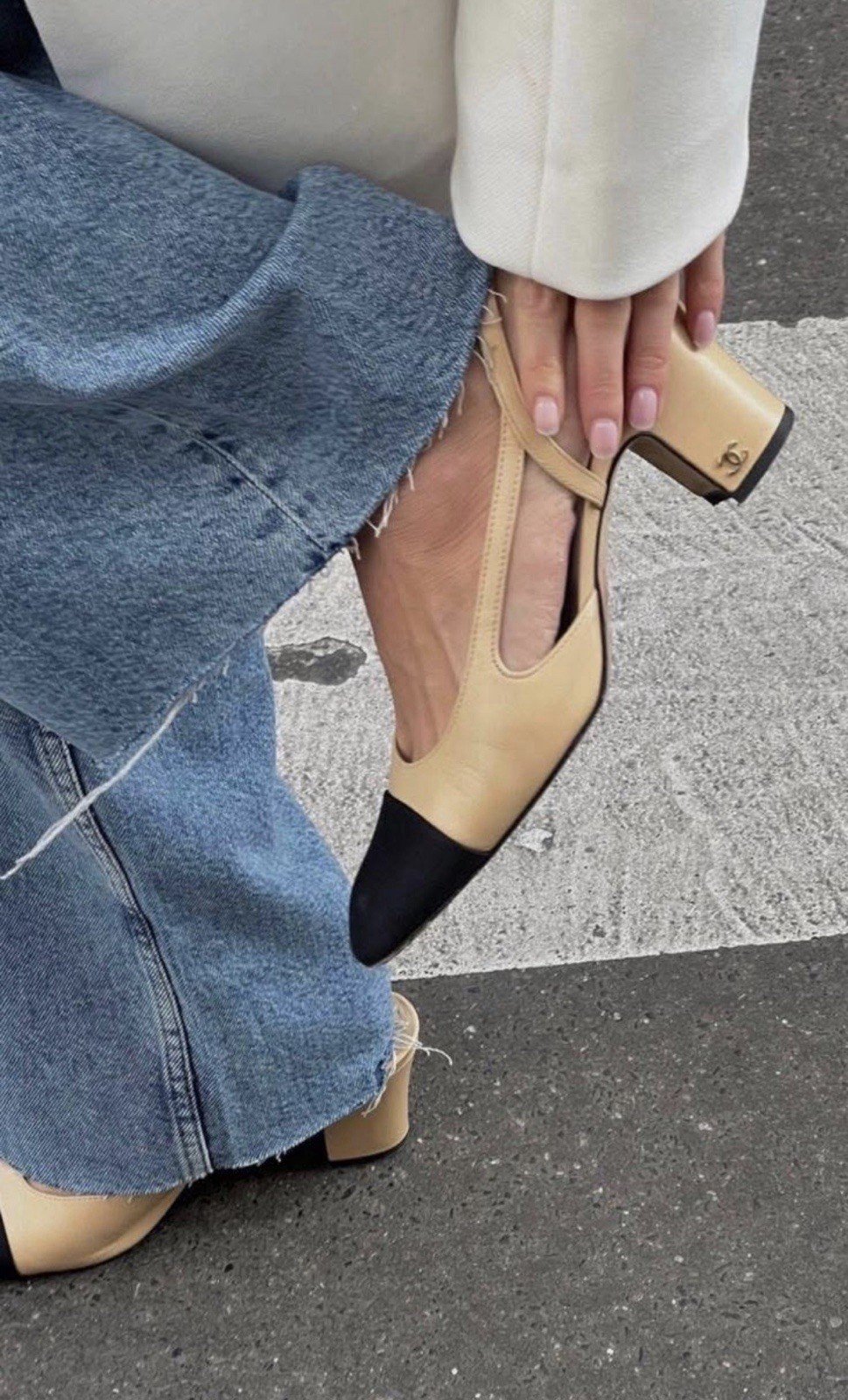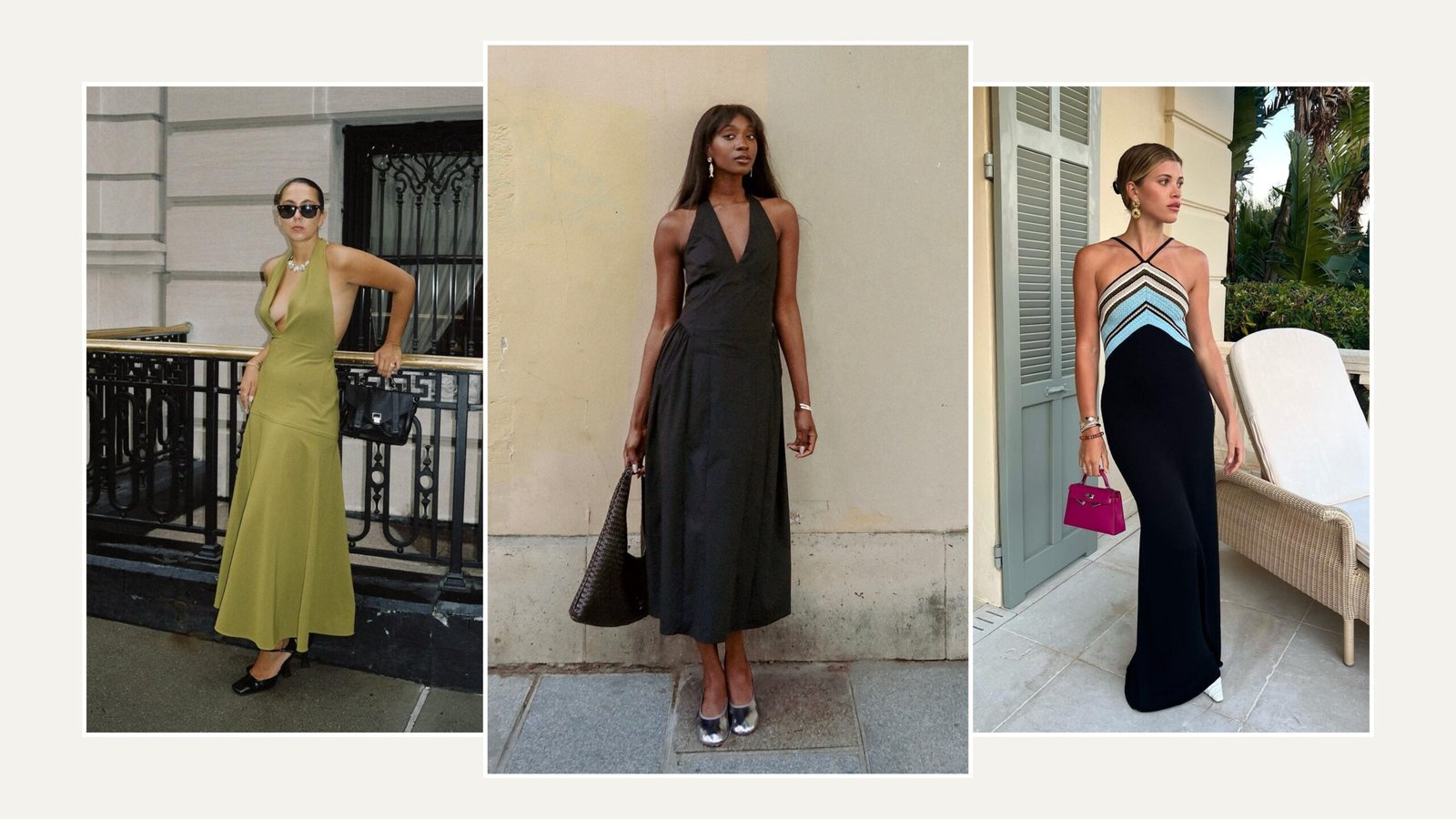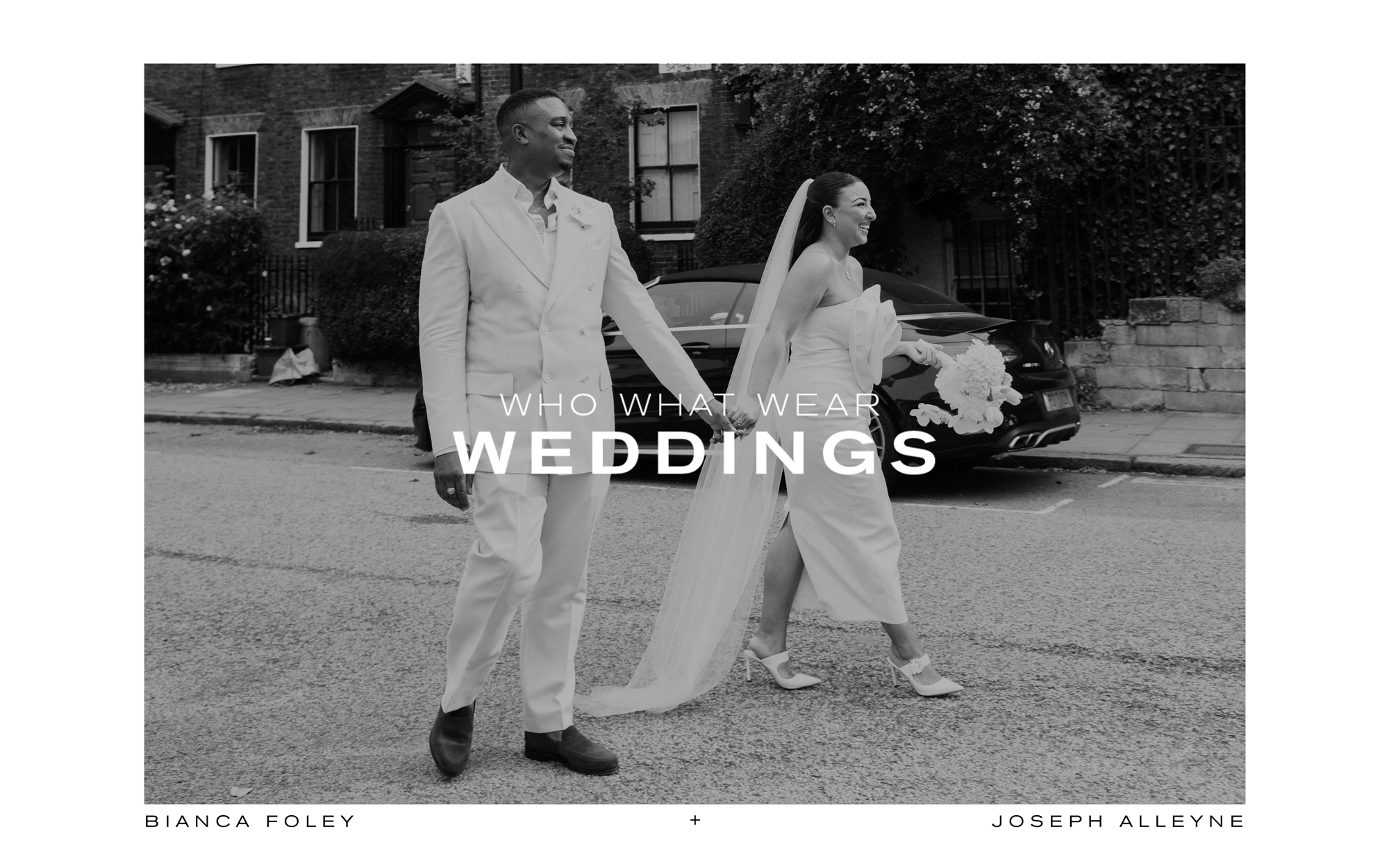Welcome to Icons Only, Who What Wear UK’s deep dive into classic items that are once again under the spotlight. This month, Who What Wear UK’s Ava Gilchrist charts the rise and rise of the most noteworthy shoes of all time, the Chanel Slingback.
It’s hard to imagine a time before Chanel’s slingback shoes. The two-toned style featuring a rounded toe cap and a dainty strap that hooks around the ankle is a staple of the French maison—a motif synonymous with elegance, ease and Parisian sophistication. It’s these qualities that have made the footwear style so ubiquitous, spotted everywhere from the runway and front rows of the Grand Palais for the luxuriate’s seasonal showings to the next emerging actress being snapped on the Boulevard de la Croisette at the annual Cannes Film Festival. In actuality, the time was 1957. A few years after Queen Elizabeth’s coronation and a decade before Mary Quant’s miniskirts would dominate Soho, the first iteration of the shoe stepped onto the scene, changing the course of designer footwear forever.
“With four pairs of shoes, I can travel the world,” the legendary designer once said of the style. As outlined in the companion book to the first exhibition dedicated to her life and legacy, Gabrielle Chanel: Fashion Manifesto, the debut offering was in fact a quartet created for every occasion: “Black-toed for daytime and general wear, navy blue for summertime, brown for a ‘sporty’ look and gold for evening”.
Now, the Chanel slingbacks are rendered in everything from candy coloured tweed to dazzling glitter fabric and grosgrain, a testament to the enduring legacy of the shoe and its ability to be boldly reinterpreted by whomever is at the helm of the house. Its perennial appeal is a testament to the timeless femininity that Chanel is built upon. Irrespective of the trend du jour, the sign of the times or the tastes of the wearer, the brand’s slingbacks are an everlasting fashion signature.
But how have they evolved from a sigil of Chanel’s comeback to a recognisable icon in their own right? With hero buys like the titular No.5 fragrance and the quilted 2.55 handbag, what about the slingbacks has made them stand above the rest? Ahead, fashion historians, celebrated Chanel collectors and style psychologists trace their origins and help weigh in on their unwavering impact.
Back in Time: The History of Chanel Slingbacks
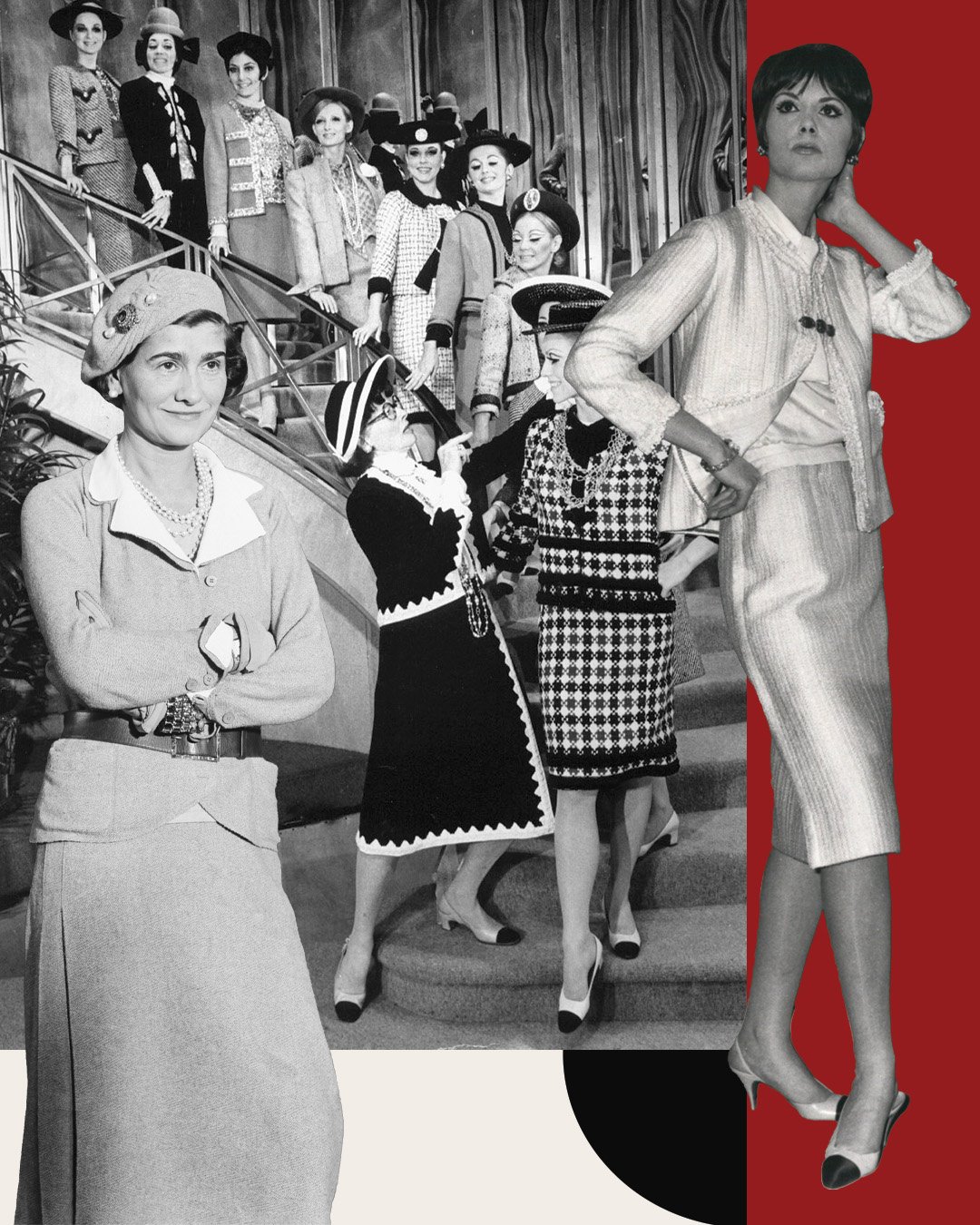
(Image credit: Who What Wear UK)
A mere 18 years before the inception of the Chanel slingbacks in 1957, the eponymous former milliner had taken a step back from fashion in response to the outbreak of the military action raging across Europe. Between her residences at The Ritz and an apartment above her atelier and boutique at 31 Rue Cambon, Chanel watched on as the world changed. “Chanel only re-opened after World War II in 1954, so the period when these shoes were introduced was very much a period of rebuilding for the house,” explains New York-based fashion historian, author and curator, Emma McClendon.
“An important context for the shoe is a comparison with the Roger Vivier stiletto heels designed for Dior to accompany his ultra-feminine, corseted, A-line styles,” she adds. “By contrast, Chanel’s slingback shoe is remarkably more comfortable—it has a block heel that’s lower and a rounded toe, as opposed to a pointed toe. These design elements make the shoes much easier to move and walk in,” she continues. “Chanel had spent the interwar years building the reputation of her house as the pinnacle of dressing for the modern woman. A woman who didn’t wear corsets, who wanted to be able to breathe in her clothing as she moved about the city in her fast-paced, modern lifestyle.”
Dr Carolyn Mair, fashion business consultant and author of The Psychology of Fashion, echoes this assessment of the setting that inspired the shoes. “The introduction of the slingback reflected an elegant rebellion against restrictive fashion. The brand was reasserting its identity of a modernist vision of functional luxury rooted in ease and understated sophistication when femininity was being reshaped post-WWII.” So, how to stage an impressive return against your competitors and set yourself apart from styles that defined a bygone era? You derive inspiration from unexpected sources. Most importantly, Old Hollywood bombshells like Marilyn Monroe, pin-up figures like Bettie Page.
“[Stars] like these embodied a curvaceous, overtly sexual, and performative femininity. Slingbacks in this context were linked to seduction and glamour, not necessarily elegance in the Parisian sense,” Mair explains. “For Chanel, repurposing this silhouette signalled a bold reframing, elevating a shoe associated with sex appeal into a mark of discretion.” The rendering of something risqué into something more socially acceptable is a big task, and one that wasn’t all without challenges. “It wasn’t well received at first,” McClendon tells me. “Generally speaking, the fashion press did not like Chanel’s tweed suits and designs when she relaunched”. This daring move, however, was in part what made a lasting impression. “Designing a shoe that exposed the heel aligned with Chanel’s legacy of ‘controlled provocation’, which challenged norms, but within acceptable boundaries. The slingback revealed just enough skin to feel slightly transgressive without being vulgar,” Mair notes.
But if you know anything about the Chanel slingbacks, you’ll know that the shoes’ creation myth is also tied up in the dandy-esque clothes worn by her friends, the Duke of Westminster.
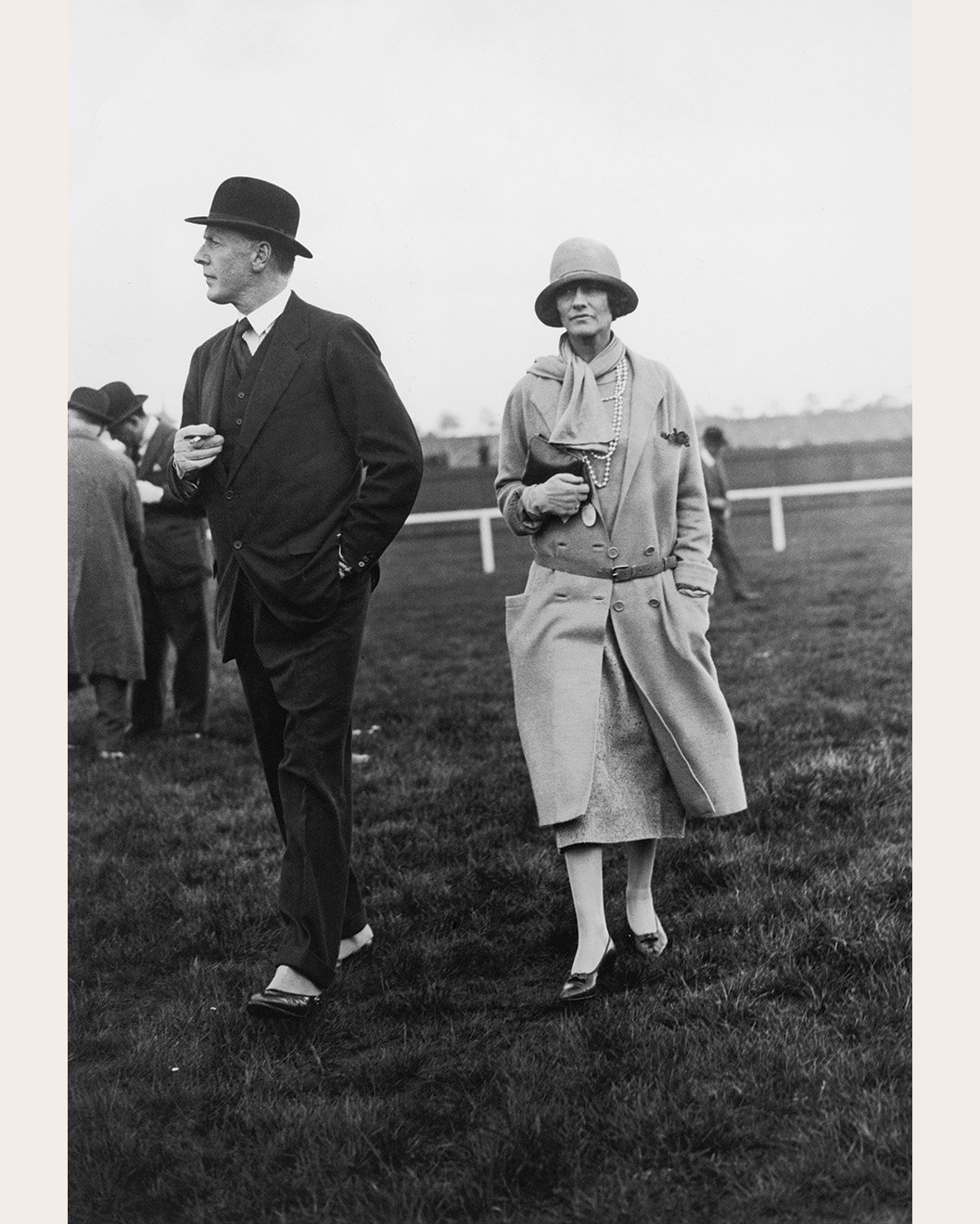
(Image credit: Who What Wear UK)
It’s said that she was influenced by the two-tone shoes worn by staff on Hugh Grosvenor’s yacht. We don’t know how much of this story is to be true, but even if much of this narrative is anecdotal, her exposure to Harris Tweed from her trips to the Scottish Highlands and Saville Row tailoring through his expertly crafted suiting and aristocratic leisurewear really helped define her lens. “Such gender-bending is an important aspect of Chanel,” McClendon says. “She wanted to create a wardrobe for the modern woman that would enable her independent lifestyle rather than inhibit it, so she looked to men’s clothing for design details to create the codes of the house that are now so recognisable.”
As they say, high risk, high reward. One could never have predicted that the amalgamation of both the hyperfeminine, through a vampy reveal of the skin around the ankle, and exaggerated masculine by making something rooted in utility rather than aesthetics would’ve stood the test of time, especially in that period. As Marie Ottavi, French fashion journalist for the newspaper Libération and the author of Rizzoli’s Karl Lagerfeld: A Fashion History puts it. “She was called modern when others disappeared.” Let’s not forget, as Ottavi reminds me, that when this shoe emerged, Elsa Schiaparelli closed her house on Place Vendôme, Christian Dior had died and a certain ready-to-wear style was being developed with Yves Saint Laurent taking charge at Dior and Gaby Aghion introduced Chloé.
A Fresh Step: The Early Design of the Chanel Slingback
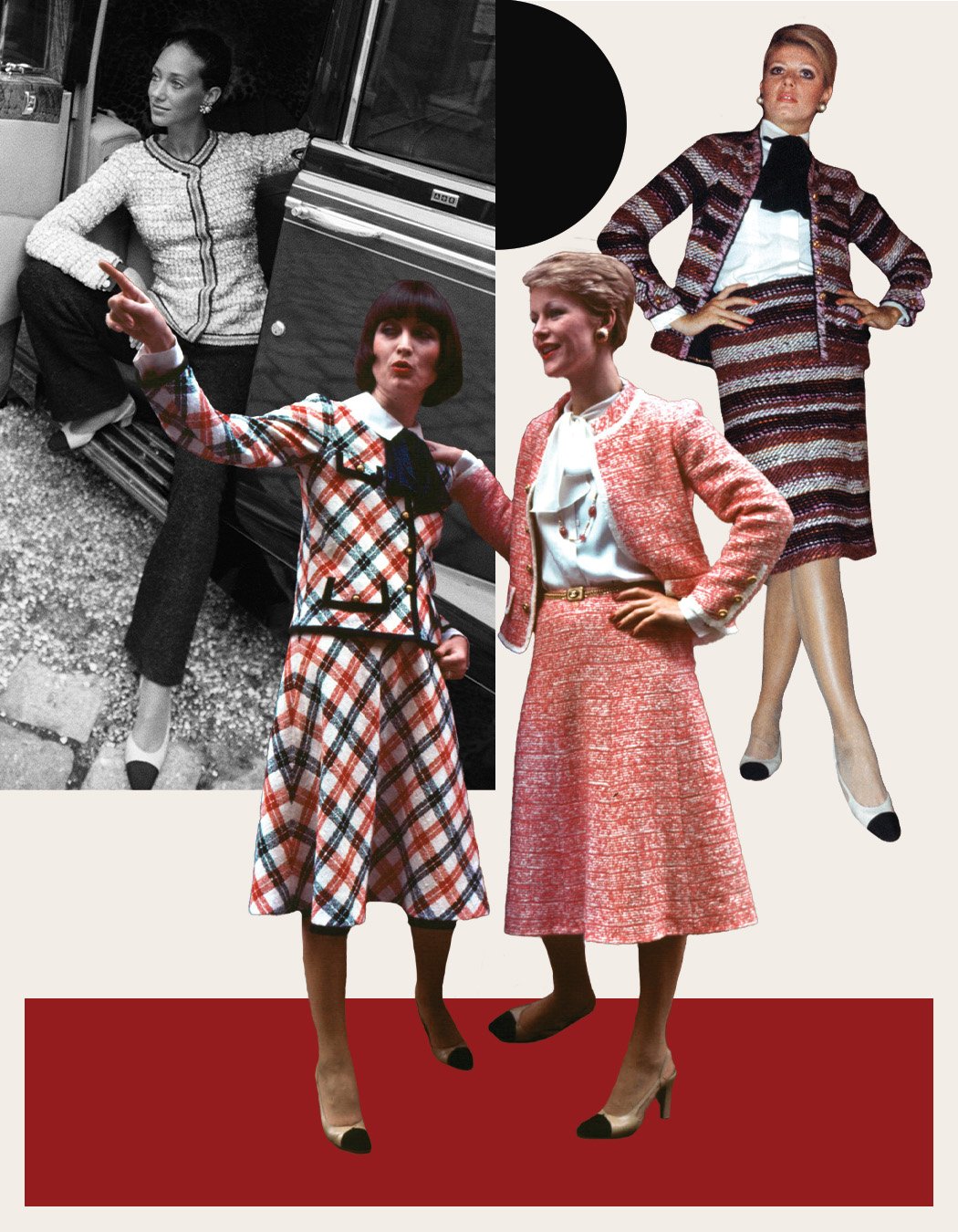
(Image credit: Who What Wear UK)
To create the distinguished silhouette, Chanel tapped several shoemakers to bring her vision to life. It was the bespoke French bootmaker Massaro, who had been operating since 1841, who answered her call. In lieu of razor-sharp heels, Massaro and Chanel shortened the height to a more manageable length of six inches. A revealing upper made of beige leather was used to elongate the figure, while the signature black satin toe-cap deceived the eye into thinking you had a smaller foot size while also concealing any scuffs. It’s also said that the elasticated slingback style helped women stealthily kick the shoes off while sitting at the dinner table and slip them on again without a struggle or a scene.
Given this is the designer who famously quipped,“before you leave the house, look in the mirror and take one thing off”, it should come as no surprise that one of her most eternal works is the one most rooted in simplicity. Even without the factors at play that propelled it as a rebellious shift away from austere and rigid fashions of the time, the very appearance and outline of the slingbacks are designed to persist. “Its success lies in its psychological balance,” says Mair. “Structured yet soft, feminine but not fragile, nostalgic and modern. It flatters many foot shapes, fits various contexts (day to night, casual to formal), and always expresses good taste. It’s a subtle yet powerful symbol of the Chanel woman communicating an enduring message of confidence, elegance and autonomy.” The slingbacks are forever youthful, and by the time they were being worn by Jane Fonda, Elizabeth Taylor and Kathryn Hepburn, they were already being fast-tracked to cult status. Then, Karl Lagerfeld came along to shake things up for good.
New Direction: How Karl Lagerfeld Shaped the Shoe
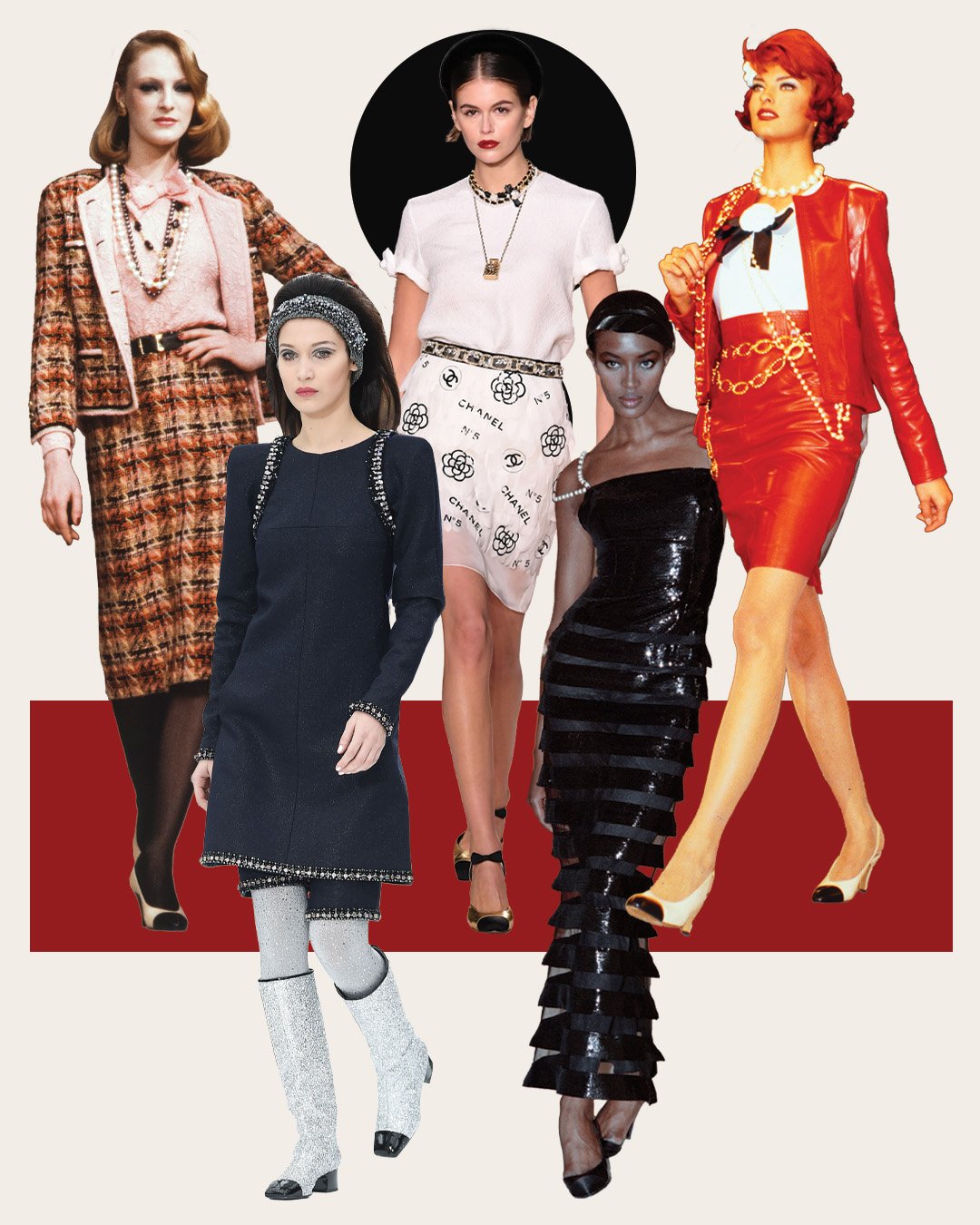
(Image credit: Who What Wear UK)
When the late German designer took control of Chanel in 1983 to revive what was considered to be flailing. Coco’s codes were nearly a distant memory. So, rather than resurrecting the brand by pandering to his predecessors’ most infamous designs—pastel jersey slip dresses and boxy suits alike—Lagerfeld opted for a visual language that was far more dramatic. Kaiser Karl, as he was affectionately dubbed at the time, dripped his designs in gold chains or camellias, cinched in proportions and closed out his shows with a supermodel in a wedding gown—a custom Chanel still practices to this day. As for the slingbacks? Out with the classics and in with the contemporary. Leather was swapped out for vibrant tweeds, transparent PVC and decorated with rhinestones. Pumps became boots, ballet flats and finished with a string of pearls.
“Lagerfeld was a master of branding,” McClendon explains of his proficiency in adapting the slingbacks to suit an array of palettes. “He had an incredible talent for identifying design codes and defining a clear visual vocabulary for any company he worked at. “Every season he created his take on the cap-toe shoes. In the hands of another designer at the time, I don’t know that this vocabulary would have become so clearly defined or as versatile,” she continues. “Over time, the slingbacks have become a branding device used for merchandising and reinforcing the company’s visual identity.” Mair agrees: “Karl Lagerfeld’s genius was his ability to tap into Chanel’s codes and reinterpret them for the now. By transforming the slingback into boots and heels, he showed how the slingback could be archival and avant-garde, classic yet playful.”
Lagerfeld reintroduced the Chanel slingbacks in the autumn/winter 2015 collection. Evoking the sense of Parisian café culture by building his very own bistro, which he aptly titled The Brasserie Gabrielle, Lagerfeld almost exclusively dressed each of his 97 looks in a pair of classic-style slingbacks.
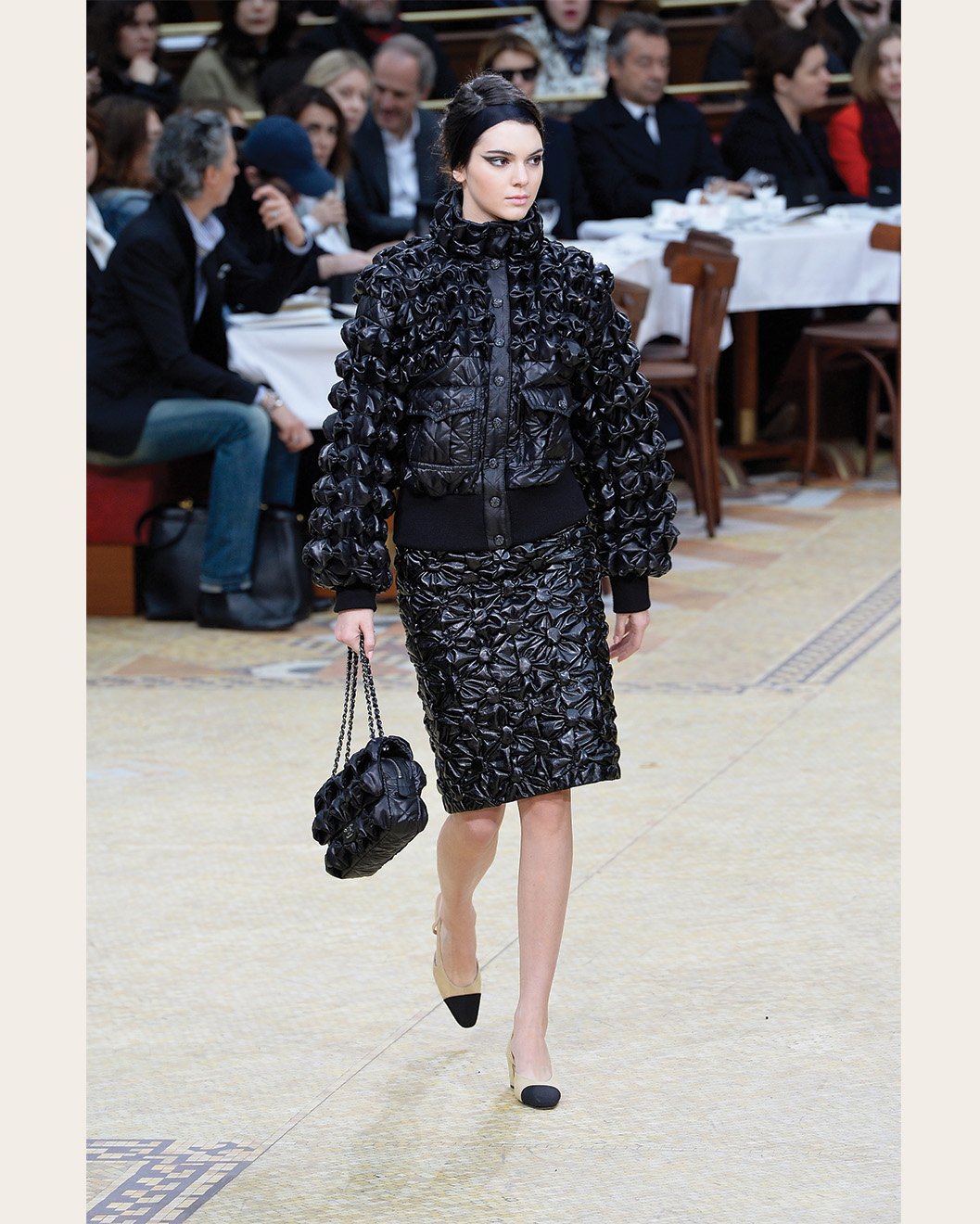
(Image credit: Who What Wear UK)
“I remember in 2015 when Karl launched it a second time…it was quite something.” Mouana Ayoub, the French-Lebanese socialite and owner of one of the world’s biggest haute couture collections, tells me what seeing this historical moment was like. “I was a bit surprised, but I thought that they were so young-looking and cute. The proud owner of over 120 pairs of Chanel slingbacks, Ayoub explains that she bought her first pair a year later to match with a couture suit. “My favourites are the ones with the black tip because, as Coco used to say, they make the foot look smaller.”
When I asked her about why she thinks the slingbacks have remained as popular as they are, she put it down to this one simple fact: “Because they are comfortable and so so chic.” Given that she was one of Lagerfeld’s biggest customers, I wondered if he ever imparted any wisdom to her about why the style was so successful. “I did in fact ask him if I could look good in them, although I am not by any means tall,” she explained. “He said to me, ‘They are made for the elegant women, not only for the tall ones’”.
Chanel’s Crown Jewel: Royals Wearing the Slingbacks
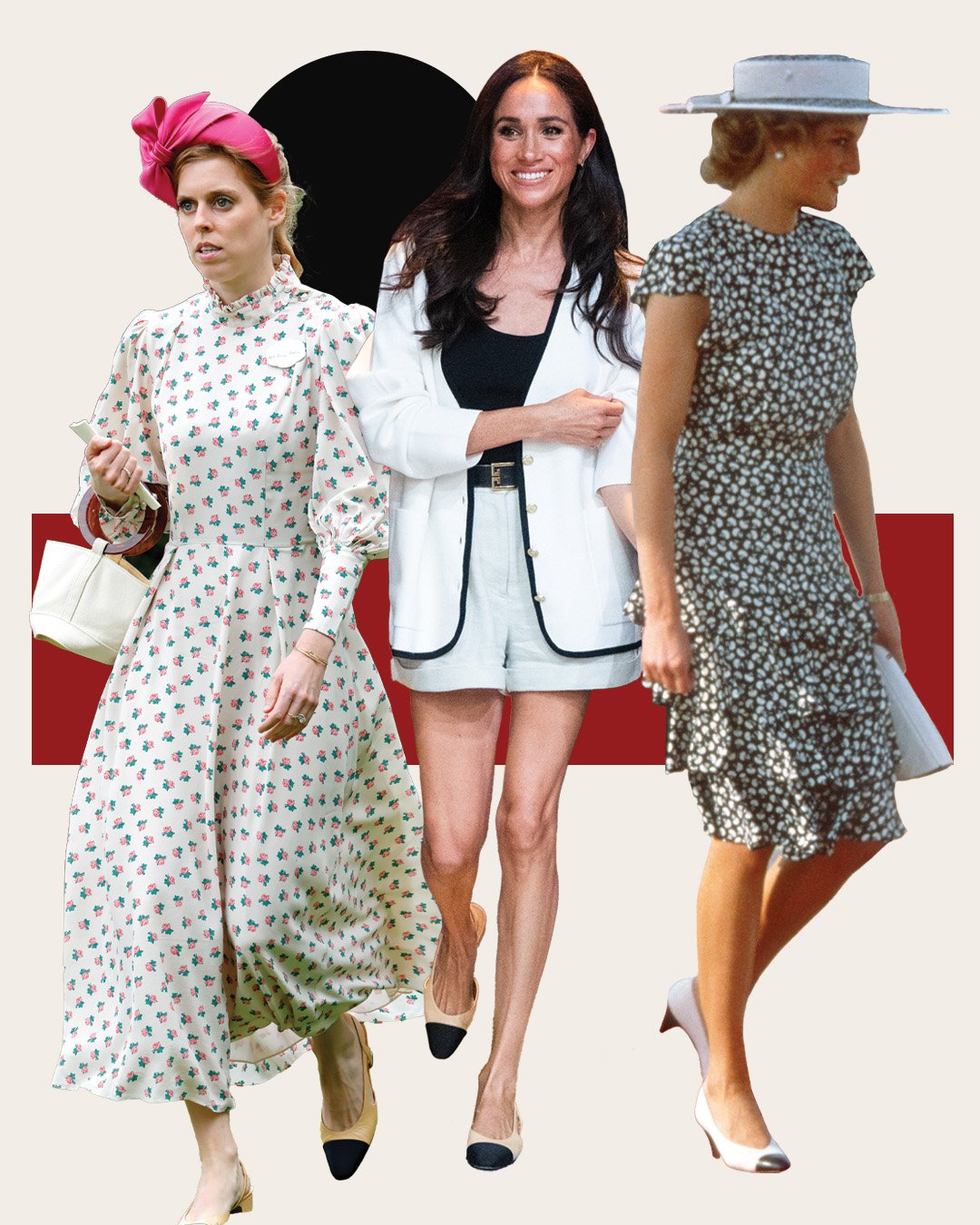
(Image credit: Who What Wear UK)
At the same time Lagerfeld was subverting Chanel’s slingbacks into novel and fresh takes, a certain Lady Spencer had begun adopting the original style as her go-to footwear choice for public appearances. Indeed, Princess Diana was no stranger to the designer set and her fashion legacy lives on in luxury bags, including Dior’s Lady Dior or Gucci’s Diana or iconic looks like her Versace and Moschino skirt suits. One of her most iconic Chanel moments comes when she wore the slingbacks on a royal tour to Thailand in 1988. The tradition continued when her daughter-in-law, Meghan Markle, wore them twice while travelling. The first was when she attended the 2023 Invictus Games in Germany alongside Prince Harry, while the second outing came during the Montecito-based couple’s trip to Colombia in 2024.
While Catherine, Princess of Wales, has yet to adopt this style (she prefers a more affordable version by Camilla Elphick), Princess Beatrice took inspiration from her late aunt by wearing them to the Royal Ascot in 2023. It’s not unusual to see monarchs look to sartorial signatures for their own wardrobes. But, it is interesting to see a style representative of nonconformity and modernism become adopted in this way. “Slingbacks convey understated elegance, tradition and refinement. These are qualities aligned with royal identity,” Mair offers as a potential reasoning for the Chanel slingbacks’ co-sign from royals. “Psychologically, their classic design signals stability and authority without appearing ostentatious.”
An A-List Staple: Celebrities Wearing Chanel Slingbacks
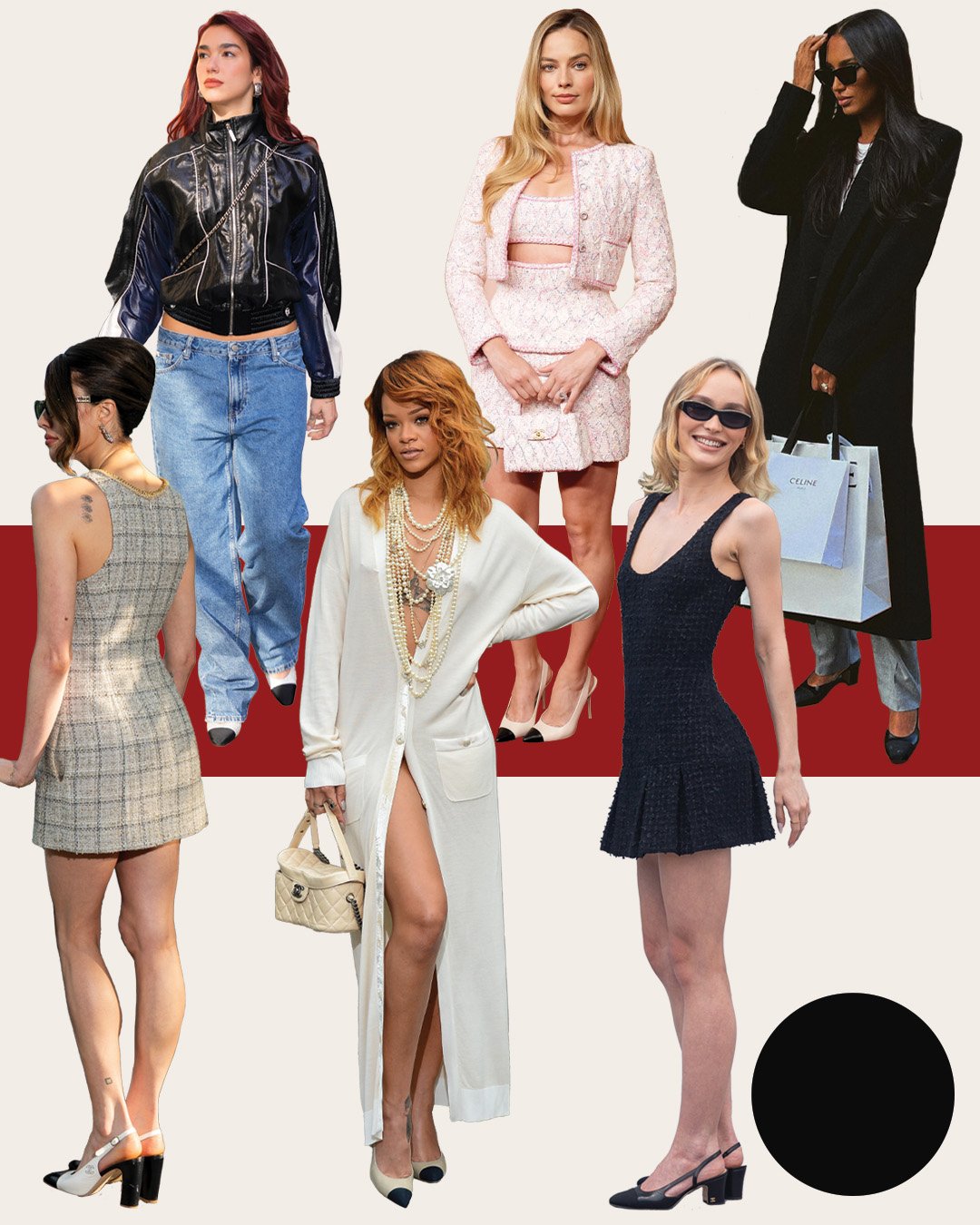
(Image credit: Who What Wear UK)
What can be said then, for the way in which Chanel’s ambassadors and friends of the house change the meaning of the shoe based on how they wear them. For Kristen Stewart, slingbacks are more a sign of resistance, punk and androgyny in keeping with her uniform of micro shorts and tailored shirting. In Lily-Rose Depp’s case, the French-American threads the needle between her archetypal Parisian and casually slung Los Angelino sides.
“A-listers often style them with a fashion-forward or rebellious edge, using the shoe to express individuality, modernity, or even a subcultural affiliation,” Mair notes. “Celebrity has always had a big effect on fashion. Having famous, recognisable stars wear Chanel styles has been a big help in building the reputation and reach of the brand,” McClendon adds.
Imprinting on the Modern Age: Influencers Wearing Chanel Slingbacks
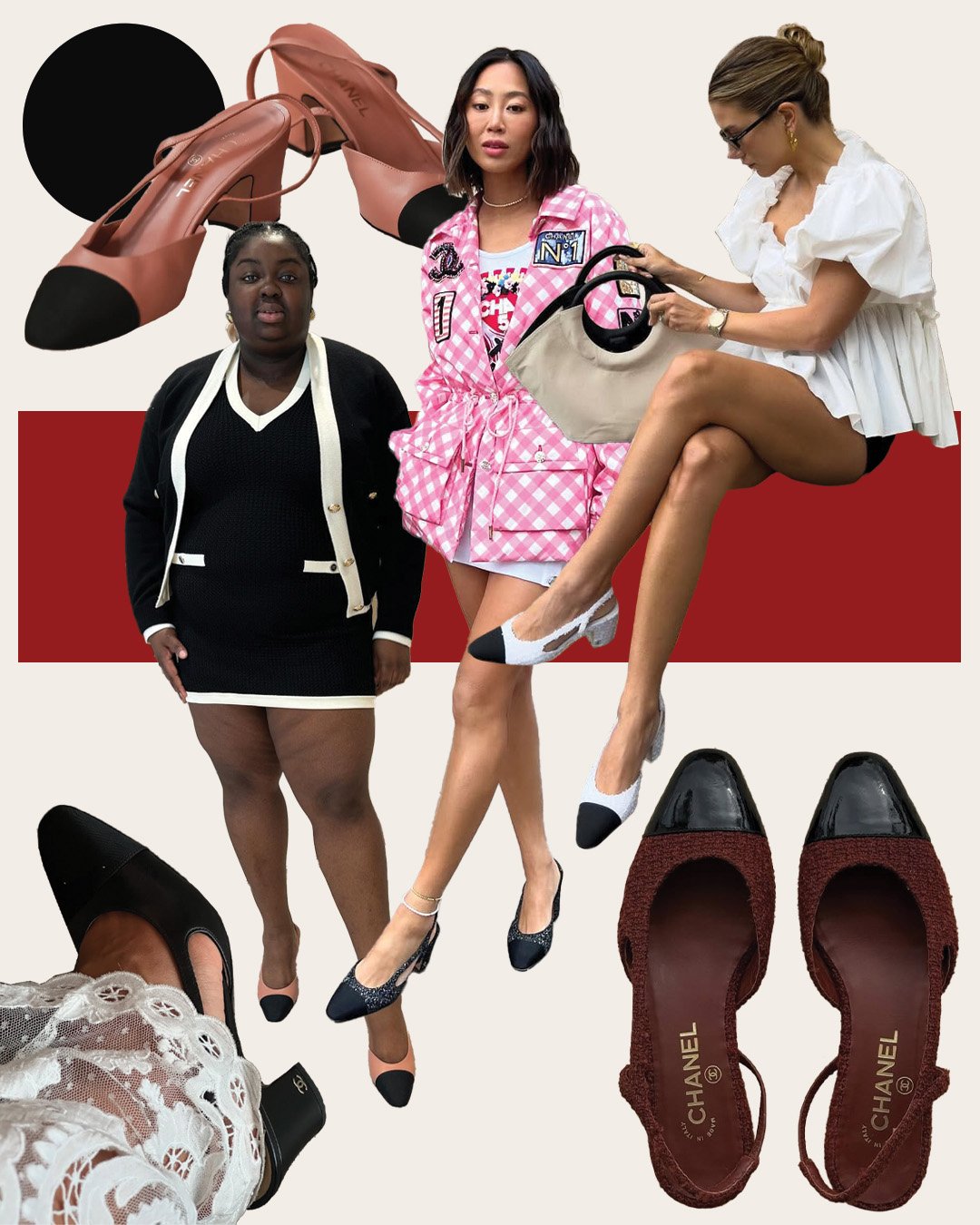
(Image credit: Who What Wear UK)
With the slingbacks celebrating their 68th anniversary this year, it’s safe to say that the style has cemented its legacy as a fashion icon. Adoration from film stars, supermodels, aristocrats and leading style figures aside, its appeal can be counted in the way the design has been copied, duplicated and desired by everyone since the style was established. “What makes them so enduring is that they go with about everything you choose to wear, whether it’s a pair of jeans or a couture suit,” Ayoub observes. In some circles, fashion insiders are taking cues from Carrie Bradshaw by wearing them with track shorts and bohemian blouses. Others are leading into more classy stylings by layering them back with little black dresses.
In 2025, the Chanel slingbacks are more popular than ever because of their versatility and lasting poise. For the first time ever, the brand appeared on eBay’s list of most bought luxury brands globally, showcasing a desire for older models and vintage styles, along with an interest in younger consumers who might be looking for a starter pair on resale platforms. For those who are yet to own a pair and looking to change that, Ayoub has a few pointers for you. “Firstly, they are very comfortable. Secondly, they fit to size, except the high-heeled ones. You will need to take half a size larger.” And with that, consider yourself a newfound expert on the Chanel slingbacks and shop a pair below.


